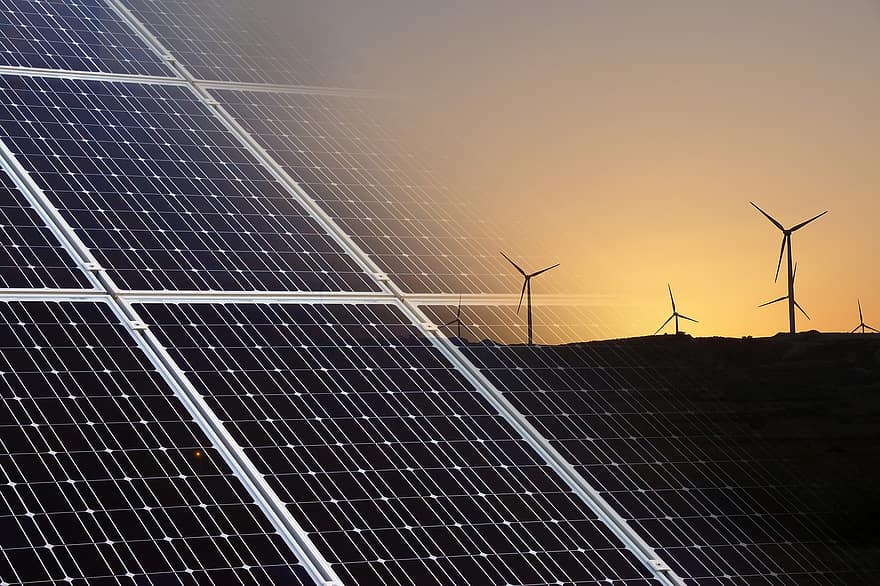Advancements in Power Electronics Revolutionizing Renewable Energy Integration
Introduction:
The field of electrical and electronics engineering has been witnessing a remarkable transformation, especially in the domain of power electronics and its intersection with renewable energy sources. In recent years, the demand for sustainable and efficient energy solutions has led to significant advancements in power electronics technology, allowing for better integration and utilization of renewable energy sources such as solar, wind, and tidal power. This article delves into the pivotal role that power electronics plays in revolutionizing renewable energy integration, exploring its key advancements and their impact on the energy landscape.
Understanding Power Electronics:
Power electronics is a crucial area of electrical engineering that focuses on the conversion, control, and conditioning of electrical power using solid-state electronics. Its primary objective is to efficiently manage the flow of electrical energy between the source and the load. Power electronic devices like inverters, converters, and rectifiers enable the conversion of electricity from one form to another, allowing for better control, voltage regulation, and energy optimization.
Advancements in Power Electronics:
1. High-Frequency Switching Devices:
Recent years have seen the development of high-performance semiconductor devices such as SiC (Silicon Carbide) and GaN (Gallium Nitride) transistors. These devices offer superior characteristics compared to traditional silicon-based components, including higher efficiency, lower losses, and the ability to operate at higher frequencies. This advancement has led to more efficient power converters and inverters, reducing energy wastage during conversion processes.
2. Smart Grids and Power Management Systems:
The integration of power electronics with smart grid technology has enabled better management and distribution of renewable energy. Smart grids employ advanced control systems that optimize the flow of electricity, balance supply and demand, and facilitate the seamless integration of renewable energy sources into the grid. Power management systems using sophisticated algorithms and real-time data analytics ensure efficient utilization of available energy resources.
3. Energy Storage Systems:
Power electronics has significantly contributed to the development of energy storage solutions such as lithium-ion batteries, supercapacitors, and flywheel energy storage. These systems, coupled with power electronic converters, enable the efficient storage and retrieval of excess energy generated from renewable sources. They play a critical role in stabilizing the grid, providing backup power, and ensuring a continuous energy supply.
4. Microgrids and Decentralized Power Generation:
The advancements in power electronics have facilitated the establishment of microgrids—small-scale, localized grids capable of operating independently or in conjunction with the main power grid. These microgrids integrate various renewable energy sources, allowing communities, industries, or remote areas to generate, store, and manage their energy independently. This decentralized approach enhances resilience, reliability, and sustainability in energy distribution.
Impact on Renewable Energy Integration:
The integration of these advancements in power electronics with renewable energy sources has brought about several significant impacts:
1. Increased Efficiency and Reliability:
The use of advanced power electronic devices has significantly improved the efficiency of energy conversion processes, reducing losses during transmission and distribution. This results in more reliable and stable power systems, contributing to a more sustainable energy infrastructure.
2. Cost Reduction and Scalability:
The declining costs of high-performance semiconductor devices and energy storage systems have made renewable energy solutions more economically viable. The scalability of these technologies allows for easier implementation in various settings, from residential solar panels to large-scale wind farms.
3. Environmental Benefits:
The widespread adoption of power electronics in renewable energy integration contributes to reducing greenhouse gas emissions and dependence on fossil fuels. This transition towards cleaner energy sources aligns with global efforts to mitigate climate change and promote environmental sustainability.
Future Trends and Challenges:
Looking ahead, the field of power electronics in renewable energy integration is poised for further advancements. However, several challenges need to be addressed:
1. Grid Stability and Control:
As renewable energy sources are intermittent in nature, maintaining grid stability and control becomes a critical issue. Advanced control algorithms and grid management systems must evolve to handle the variability of renewable energy inputs.
2. Technological Standardization and Interoperability:
To ensure seamless integration and interoperability of different power electronic devices and renewable energy systems, standardized protocols and interfaces need to be established across the industry.
3. Research and Development:
Continuous investment in R&D is crucial to further enhance the efficiency, reliability, and cost-effectiveness of power electronics in renewable energy integration. Innovation in materials, device design, and system architectures is essential for future progress.
In conclusion, the advancements in power electronics have played a pivotal role in revolutionizing the integration of renewable energy sources into our electrical infrastructure. These developments have brought about increased efficiency, reliability, and scalability, contributing to a more sustainable energy ecosystem. Despite challenges, ongoing research and technological innovations hold the promise of a future powered predominantly by clean and renewable energy, underpinned by robust power electronics solutions.
editor's pick
latest video
news via inbox
Nulla turp dis cursus. Integer liberos euismod pretium faucibua









